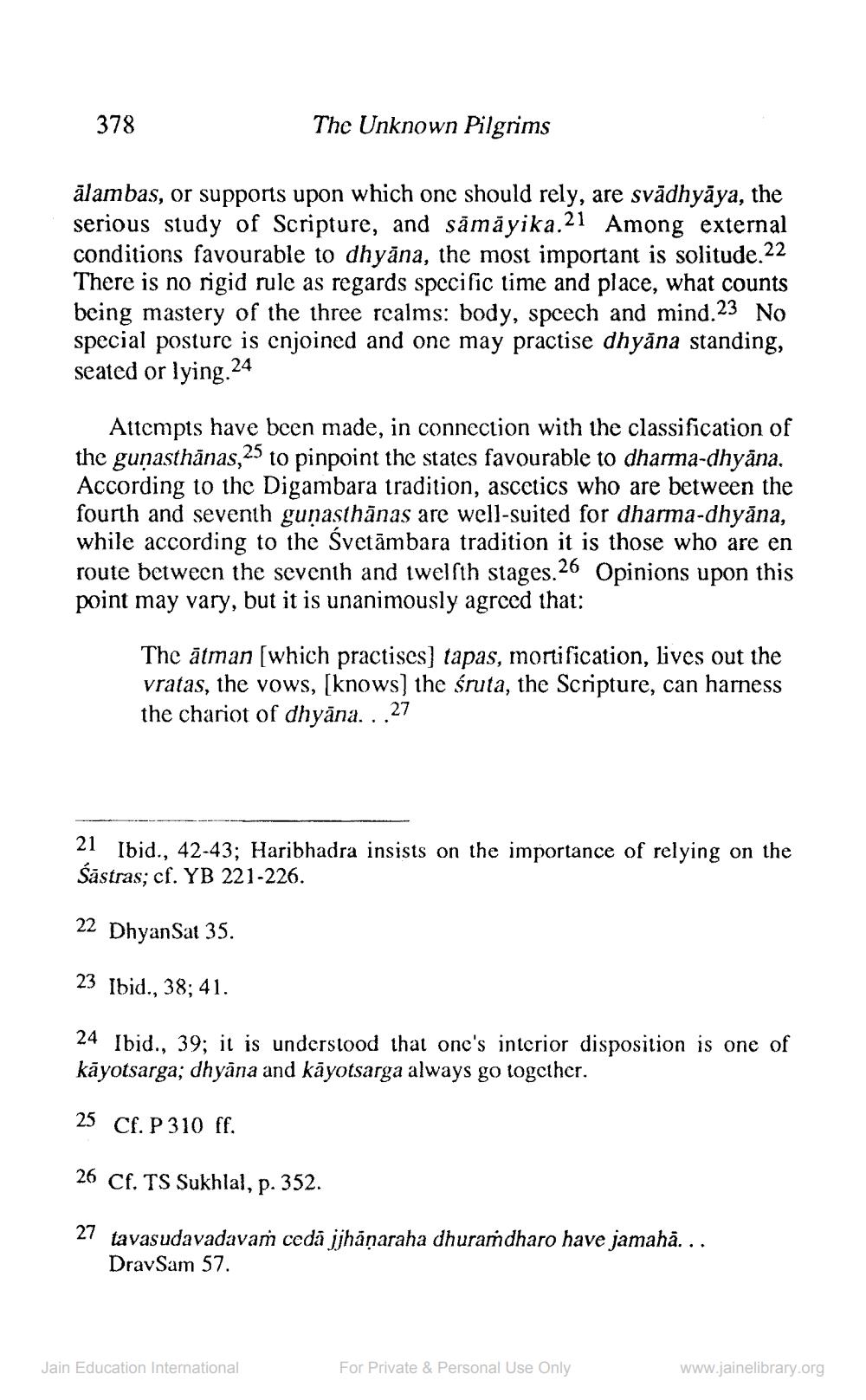________________
The Unknown Pilgrims
ālambas, or supports upon which one should rely, are svādhyāya, the serious study of Scripture, and sāmāyika.21 Among external conditions favourable to dhyāna, the most important is solitude.22 There is no rigid rule as regards specific time and place, what counts being mastery of the three realms: body, speech and mind.23 No special posture is enjoined and one may practise dhyāna standing, seated or lying.24
24
378
Attempts have been made, in connection with the classification of the guṇasthānas,25 to pinpoint the states favourable to dharma-dhyāna, According to the Digambara tradition, ascetics who are between the fourth and seventh guṇasthānas are well-suited for dharma-dhyāna, while according to the Svetambara tradition it is those who are en route between the seventh and twelfth stages. 26 Opinions upon this point may vary, but it is unanimously agreed that:
The atman [which practises] tapas, mortification, lives out the vratas, the vows, [knows] the śruta, the Scripture, can harness the chariot of dhyāna. . .27
21 Ibid., 42-43; Haribhadra insists on the importance of relying on the Śāstras; cf. YB 221-226.
22 DhyanSat 35.
23 Ibid., 38; 41.
24 Ibid., 39; it is understood that one's interior disposition is one of kayotsarga; dhyāna and kāyotsarga always go together.
25 Cf. P310 ff.
26 Cf. TS Sukhlal, p. 352.
27 tavasudavadavaṁ cedā jjhāṇaraha dhuraṁdharo have jamahā... DravSam 57.
Jain Education International
For Private & Personal Use Only
www.jainelibrary.org




